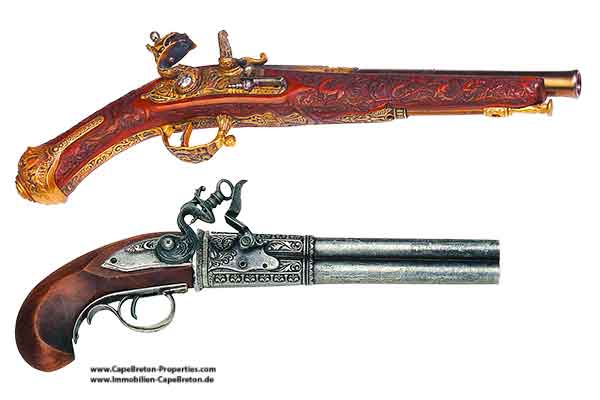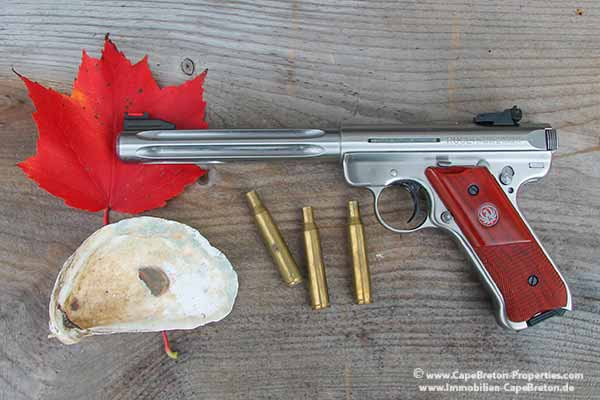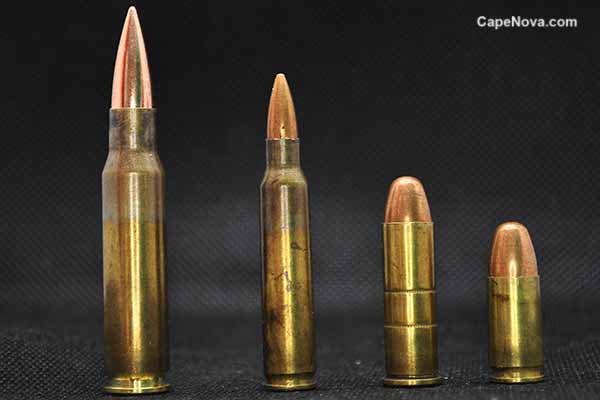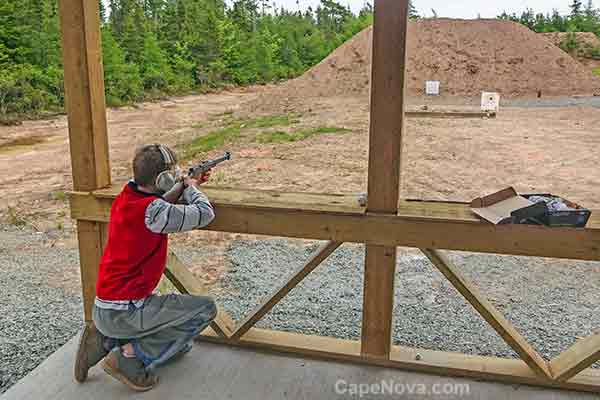Firearms Safety
Firearms Safety and Firearms Licence
Canadian Firearms Licence
A firearms licence shows that the licence holder can possess and use firearms.
The Possession and Acquisition Licence (PAL) is the only licence currently available to new applicants. It is renewable every five years. As a general rule, applicants must have passed the Canadian Firearms Safety Course.
For more information, please check out the RCMP website here and here.
Canadian Firearms Safety Course
- Non-restricted: Canadian Firearms Safety Course (CFSC) is an introductory course for anyone (including minors) who want to own non-restricted firearms.
- Restricted: Canadian Restricted Firearms Safety Course (CRFSC) is an introductory course for anyone over the age of 18 who wants to own restricted firearms.
More information can be found on the RCMP website here.
Canadian Firearms Safety 2024: Course - Test - Certificate
Until recently, firearms courses in Nova Scotia have been offered by Hnatiuk's Hunting & Fishing Ltd. near Truro, NS.
The fee was
$50 + tax or less.
It looks like that in 2022 the Government of Nova Scotia has awarded this lucrative contract to a different organisation. Now, all courses are offered by “Safety Services Nova Scotia”.
The course fee now is $80 + HST ($92.00)
So, if you want to have a firearms licence, bite the bullet, pay the fee and sign up for a Canadian Firearms Safety here:
Fire Arm Safety Training - Course Registration
More information can be found on the Nova Scotia Provincial Firearms Office website here...
or here: Non-Restricted Firearms Safety Course
Canadian Firearms Safety Course
Topics of these courses are:
-
evolution of firearms, major parts, types and actions
-
basic firearms safety practices
-
ammunition
-
operating handgun actions
-
firing techniques and procedures for handguns
-
care of restricted firearms
-
responsibilities of the firearms owner/user
-
safe storage, display, transportation and handling of restricted firearms
There are some exceptions and special regulation for different provinces in place.
If you passed the CFSC before February 1999 you have also passed the CRFSC by default. You can apply for a Possession and Acquisition Licence without taking the course again.
It is not our clubs mandate to teach basics of firearms safety or to prepare you for these courses and test. But of course, we as a sport shooting club are always here to support and help.

The Vital Four ACTS of Firearm Safety
We expect any club member, but also any shooter and any visitor of the firearms range to fully understand and comply with the rules and regulations of Firearms Safety.
The Vital Four ACTS of Firearm Safety is part of this basic knowledge. It is always a good idea to refresh your memory from time to time on this topic.
The Vital Four ACTS of Firearm Safety
Assume every firearm is loaded.
• Regard any firearm as a potential danger
Control the muzzle direction at all times.
• Identify the safest available muzzle direction.
• Keep the firearm pointed in the safest available direction.
• The muzzle of a firearm should not be pointed towards yourself or any other person.
Trigger finger must be kept off the trigger and out of the trigger guard.
• Do NOT put your finger on the trigger or inside the trigger guard when you pick up a firearm.
See that the firearm is unloaded - PROVE it safe.
• Do not handle the firearm unless you can properly PROVE it safe.
• Check to see that both chamber and magazine are empty. Do this every time you handle a firearm, for any reason.
• Pass or accept only open and unloaded firearms. It is an essential rule to adopt.
This was taken from the Canadian Firearms Safety Course Manual.
 Here you can download the CANADIAN FIREARMS SAFETY COURSE MANUAL
Here you can download the CANADIAN FIREARMS SAFETY COURSE MANUAL

How does a gun and a bullet work?
Cape Nova says:
A part of knowing about firearms safety implies that you have knowledge about how your firearm works.
Learn the Mechanical and Handling Characteristics of the Firearm you are Using.
Maybe the following videos may be a little help to grasp a basic understanding.
If you think, you have a better video or animation to be placed here, please let us know.

Have a look at these YouTube videos and learn how guns and bullets work:
How a Winchester 1873 works
Si vis pacem, para bellum.
How a Glock handgun works
by Matt Rittman
Remington 870 Pump Shotgun
by
"World of Guns"
BOLT ACTION RIFLE REMINGTON 700
by
"World of Guns"
All you need to know about bullets
by NetGrook
Shotgun Cartridge Vintage Video
Texas Parks and Wildlife
Shotgun Basics for Newbies
by GunsKnivesSurvival
Firearm Maintenance: Ruger 10/22
Part 1/4 by Brownells, Inc.

More about Firearms, Guns and Bullets

The Evolution of Firearms
By all accounts and historical references, it is believed that the Chinese were the first to develop explosive powder during the 9th century. They used it in fireworks and rockets. It wasn’t until the early 1400s that the first mechanical device for a firearm was invented in Europe.
It was also invented at about the same time by the English alchemist Roger Bacon (1214-1292). The matchlock musket came to Canada when Sir Humphrey Gilbert arrived in Newfoundland in 1583, armed with the matchlock and some cannons. This marked the beginning of Canada’s gun history. More information about the History of the firearm can be found on WIKIPEDIA here.

History of firearms in Canada
Did you know that up until the late twentieth century, private gun ownership was seen as vital for defending Canada against external aggression? In fact, almost every adult male had to enlist in the militia and bring their own firearm to protect citizens against domestic threats. When the early British settlers came to Canada, there was no standing army or modern police service. Thus, personal and national security alike was dependant on civilian gun ownership and the right to bear arms was seen as fundamental, even in Canada.
More information about the Brief History of the Canada’s gun laws 1945 – 1995 can be downloaded here.


Ammunition, Bullets and Calibres
Even experienced members of our sport club get often confused with the large number of calibres available. As a sport shooter you don’t need to know about each single calibre existing in detail. But you do need to know the basics of different ammunition types and how bullets work. And for sure you do need to know about the calibres for the firearms you own and use yourself. A good source for more information can be found here.

2.5 million licensed gun owners in Canada
According to several sources there are around 2.1 - 2.5 million licensed gun owners in Canada. Hunters, trappers, sport shooters, farmers, collectors and many more use firearms in Canada legally and responsible. Firearms have been a fundamental tool to build this nation right from the early 1600.
Still today many Canadians depend on firearms for their food supply, on farms and to survive.

More information coming soon, unless I am hunting, fishing or on the range …